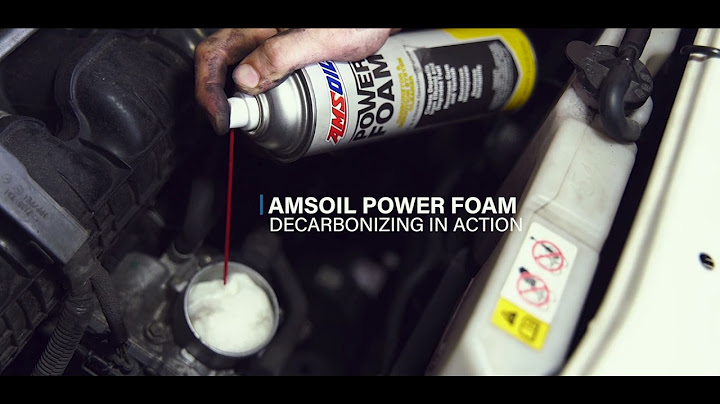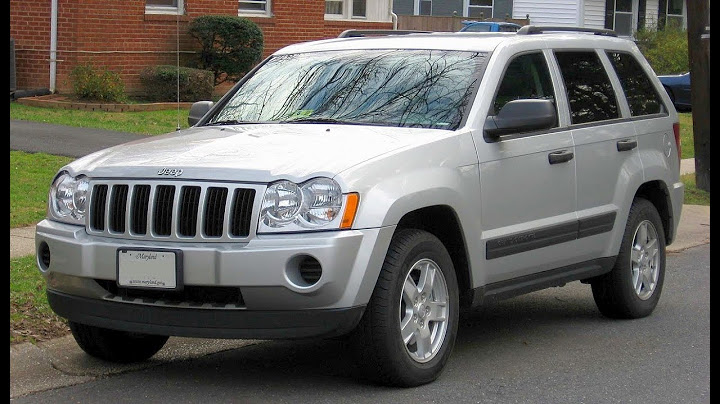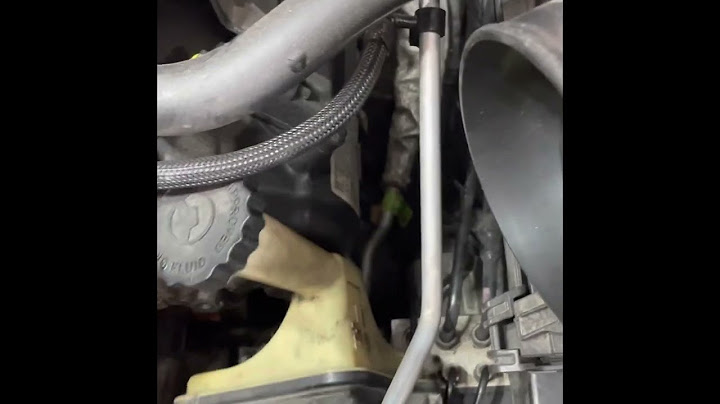It’s usually best practice to change your Jeep Wrangler power steering fluid every 2-3 years or 50,000 miles (whichever comes first). If you take your Wrangler to a professional mechanic, expect to pay around $100—but you can do the job yourself for $10-20. Show
Even the toughest Jeep owners enjoy the power steering feature found in modern Wranglers But what does power steering fluid do? It’s a hydraulic fluid that lubricates the components in a power steering system to make steering relatively effortless. Jerry, the licensed insurance broker that makes it simple and fast to find cheap car insurance, has put together this guide for Jeep owners. Here, we’ll walk you through how to replace your power steering fluid—and reduce your Jeep Wrangler insurance cost as well! RECOMMENDED Compare auto insurance policiesNo spam or unwanted phone calls · No long forms · No fees, ever What type of power steering fluid does a Jeep Wrangler use?If you look at a Jeep Wrangler’s owner’s manual, you’ll find the following fluid is recommended: Mopar® Electric Steering Pump Fluid. Today, you can find genuine Mopar fluid by searching for Power Steering Fluid - Mopar (68088485AB). Can you use other brands? Certainly. While Mopar is designed specifically for Chrysler vehicles, power steering fluid made by other manufacturers can be suitable. Take a look below: You can use automatic transmission fluid (ATF) instead of power steering fluid in newer Jeeps, but always check your owner’s manual to make sure this substitution is acceptable. How to change a Jeep Wrangler’s power steering fluidAs with other car maintenance projects, the first thing you’ll need to do before changing your power steering fluid is assemble the products you need:
Step 1: Park your Wrangler in a flat area, put on the emergency brake, and secure it with wheel chocks. You never want your vehicle to roll while you’re working on it. Step 2: Raise the hood and look for the power steering reservoir, which is likely on the passenger’s side of the engine. The cap should be marked. Step 3: Using your pump, syringe, or turkey baster, remove as much of the old fluid as you can. Step 4: To flush out the rest of the fluid, disconnect the return hose (typically, the thinner of the two hoses connected to the reservoir) at its lowest point. Place the end of this hose in the container for the used fluid. Step 5: Add new fluid to the reservoir with the funnel. Step 6: Turn on the engine and then turn the wheel of the Wrangler several times to work the fluid through the power steering system and discharge the old fluid. This will also help get any air out of the hose system. (Here’s where having your car jacked up comes in handy.) Repeat steps 5 and 6 until all the old fluid is completely flushed out. When you see only red, clean fluid being discharged into the container, this means you’ve gotten rid of all the old power steering fluid. Step 7: Shut off your engine and put the return hose securely back in place. Step 8: Now, fill up the power steering reservoir with new fluid, making sure to reach the fill line. If you have jacked up your Wrangler, take it down.
What is the power steering fluid change interval for a Jeep Wrangler?Plan to replace the power steering fluid in your Jeep Wrangler every 50,000 miles or every two to three years—whichever comes first. But if you notice any of these problems, you may need to do an early fluid change, have a leak in the reservoir or hoses, or a loose clamp:
How to save on Jeep Wrangler insuranceWhile routine maintenance and repairs on a Jeep can wind up being expensive, insurance costs for the Wrangler can also be pricey. But there’s a really simple way you can slash your insurance costs with Jerry. How? It’s simple. Download the Jerry app or go to getjerry.com. In just 45 seconds, Jerry can search for competitive rates on the coverage you need for your Wrangler. Once you see the policy you like best, we’ll do all the paperwork for you and can even help cancel your old policy! On average, Jerry users save $800+ a year on car insurance.
Are you overpaying for car insurance?What kind of power steering fluid does a 2013 Jeep Wrangler take?Registered. We recommend you use MOPAR® Power Steering Fluid +4, MOPAR® ATF+4® Automatic Transmission Fluid.
Is Mopar power steering fluid the same as ATF 4?Yes, ATF+4® is the correct fluid to use for your transmission and power steering.
What kind of power steering fluid does a 2010 Jeep Wrangler take?Prestone - MAX American Vehicle Power Steering Fluid + Stop Leak; 12 fl. oz., Synthetic, 100k Miles (Part No. AS277)
|

Related Posts
Advertising
LATEST NEWS
Advertising
Populer
Advertising
About

Copyright © 2024 paraquee Inc.
















